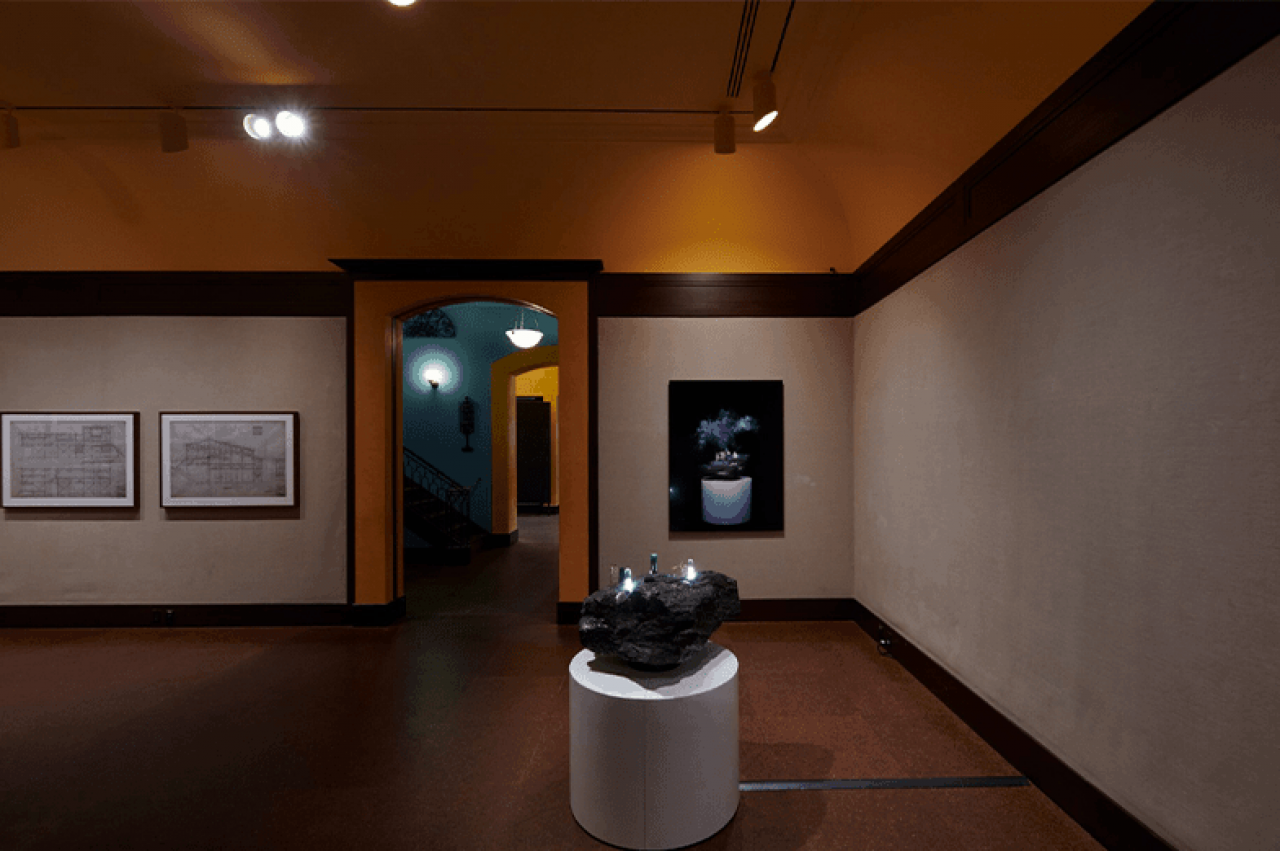October 26, 2023
Work by Stuckeman professors featured in Carnegie Museum of Art exhibition

UNIVERSITY PARK, Pa. — A project created by two Stuckeman School architecture professors in the College of Arts and Architecture that exposes how coal mine fires affect the environment is featured in the “Unsettling Matter, Gaining Ground” exhibit at the Carnegie Museum of Art's Heinz Architectural Center in Pittsburgh through Jan. 7, 2024.
Pep Avilés, associate professor of architecture and the Stuckeman Career Development Professor in Design, and Laia Celma, assistant teaching professor of architecture, created their piece titled “Dystopian Carousel” for the exhibition. The piece focuses on the continued emissions caused by mine fires and their devastating effects on the environment, communities and the economy.
Avilés and Celma's work consists of a large piece of anthracite, which sits atop a turntable that completes one rotation per minute. Atop the piece of coal are a series of props that reflect the data (gas emissions, soil temperature, microbial life, etc.) and the landscapes that coal extraction has left behind. On the wall near the anthracite is a photograph of the coal in motion on the turntable as a mise en abyme, which is a formal technique in Western art of placing a small copy of an image inside a larger one.
“Collectively, the [props] perform as a dystopian carousel of the culture of extraction,” explained Avilés. “The photograph presents the same piece in motion, blurred against a stream of smoke that appears to the spectator as frozen.”
The piece is to represent the fact that emissions from mine fires even from long ago continue to impact the environment today and will continue to do so into the future.
“It doesn't matter that we keep collecting more data about those past events, the emissions they caused are the only thing that remains constant,” said Avilés.
According to the exhibition website, the show brings together historical artworks from the Carnegie collection along with contemporary projects and new work to “tell the complex stories of how fossil fuel economies have been produced and upheld, whom they have excluded and left vulnerable, and how they have shaped and disrupted cities, communities and ecologies.”
The Carnegie Museum held a public program Oct. 5-6 where artists and guests from Carnegie Mellon University, Rice University, the Massachusetts Institute of Technology and other organizations, such as the Center for Democratic and Environmental Rights, gave presentations on the topics featured in the exhibit with gallery walkthroughs, panel discussions, talks and a musical performance.
Avilés and Celma spoke with three other artists and researchers on a panel moderated by the exhibit's co-organizers Ala Tannir and Theodossis Issaias.
“In all stages of the project, we wanted to make visible what is invisible,” Celma said. “There are things happening below ground in the mines that we translate as data so it's visible above [the ground.]”
Avilés and Celma collaborated previously on works for the Oslo Architecture Triennale and the Rouse Gallery in the Stuckeman Family Building on the University Park campus.